Around two years ago I read a poem with the title “Die Medea von Lodz” from Bertolt Brecht. It is a poem about being a stranger and it connects the old tragedy Medea, written 431 before Christ by Euripides, with the antisemitic exclusion of Jews by the Nazis. In addition there was a little note next to the title, saying that in Łódź was the second biggest ghetto in Poland. Since I have read this poem and the little note besides it, I wanted to visit Łódź. And now the time was come…
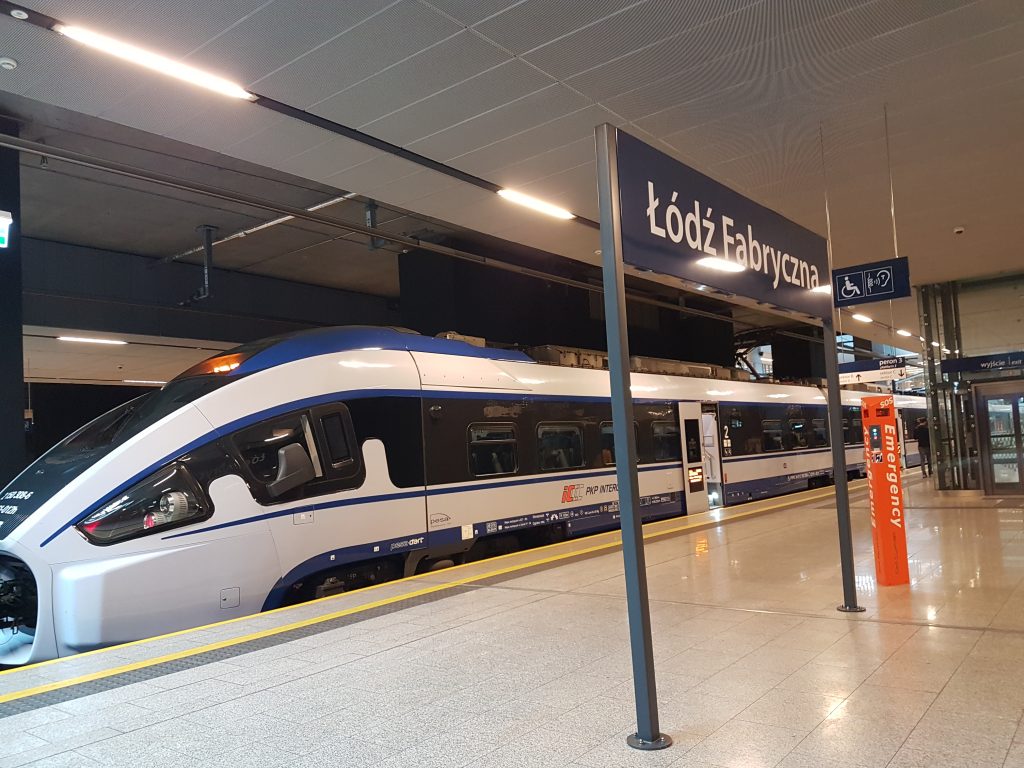
I travelled with some of the other Schuman volunteers. With the train Łódź was just about 1.5 hours away from Warsaw. We spend the time with playing cards and relaxing.
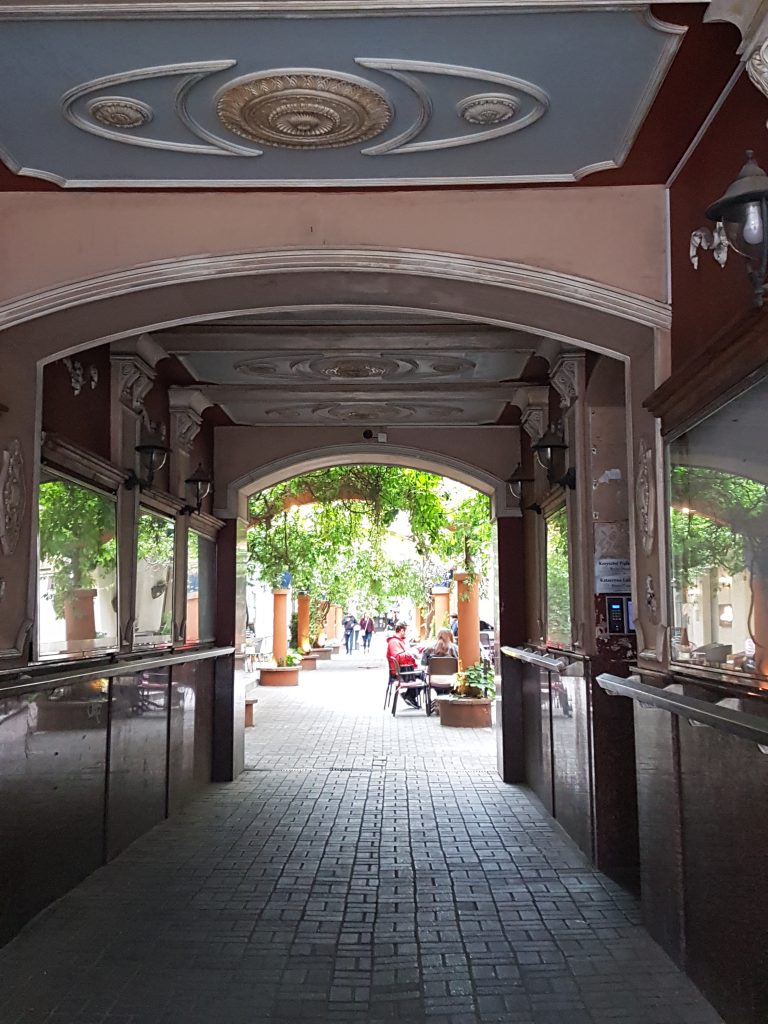
We walked through the old beautiful streets of Łódź, discovering nice inner courtyards with bars, trees and shops.
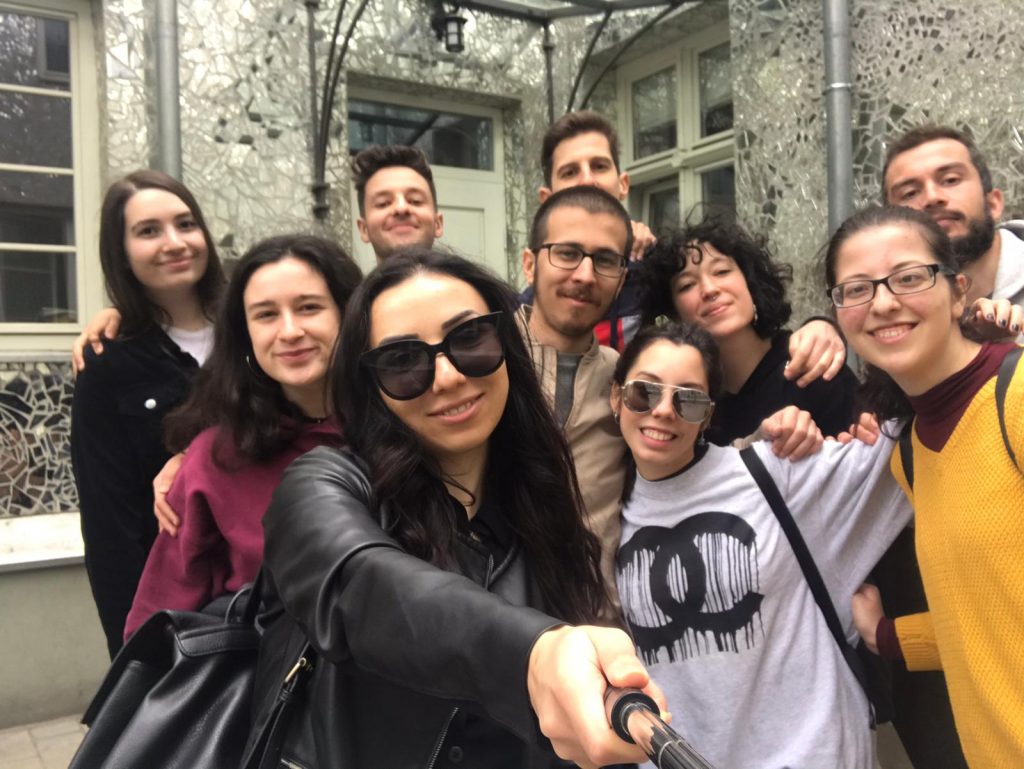
Furthermore Łódź has a lot of street art, for example the inner courtyard with a mosaic made out of mirror pieces.
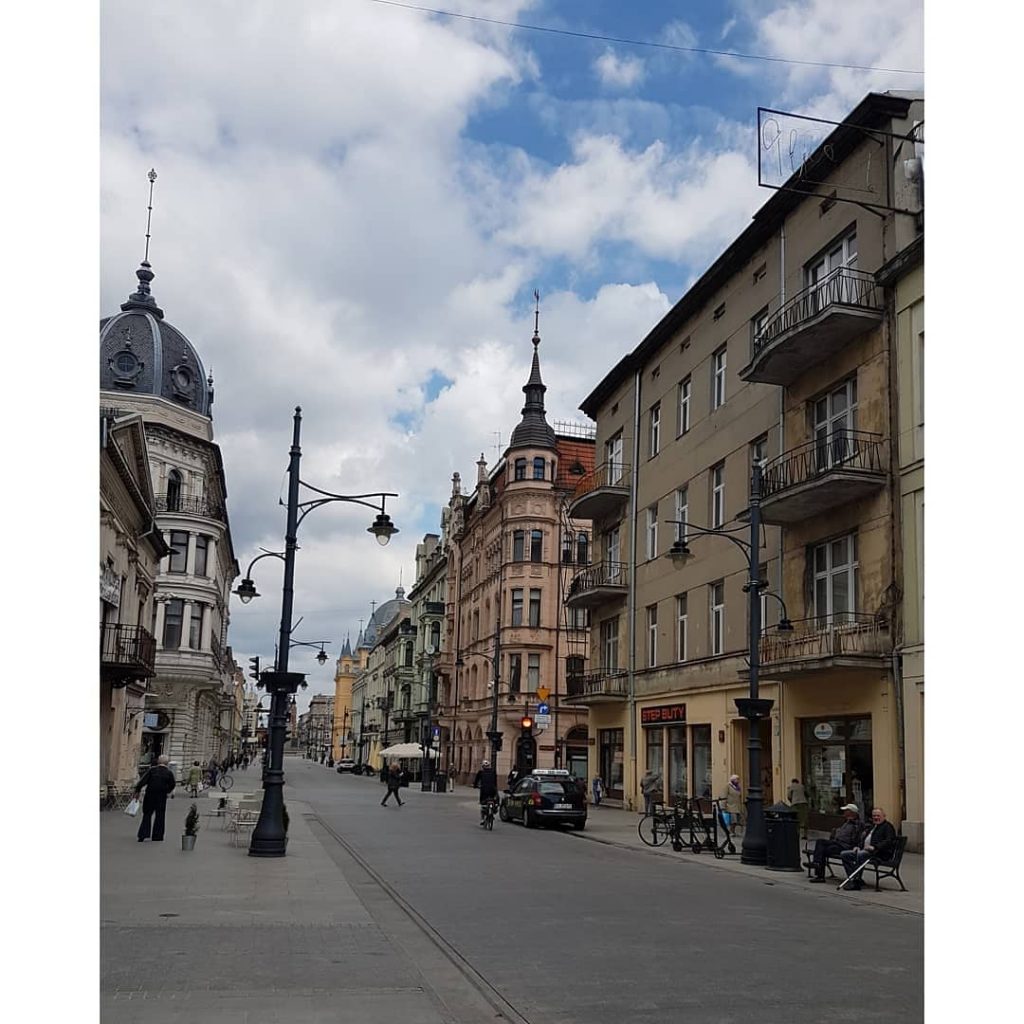
In the afternoon we walked along the windows of nice-looking restaurants and shops in the beautiful, old buildings of the street “Ulica Piotrkowska”.

After walking a lot, we were relaxing in a café, where we ate delicious waffles.
One of our main interests this day was the old Jewish cemetery. It is an impressive, but also oppressive place with a lot of trees, old gravestones. Some of them carry the inscription that the people died in concentration camps like Treblinka. Furthermore there is a ghetto field for the people who died in the Łódź ghetto. All in all it is not just a normal cemetery, it is a memorial, too.
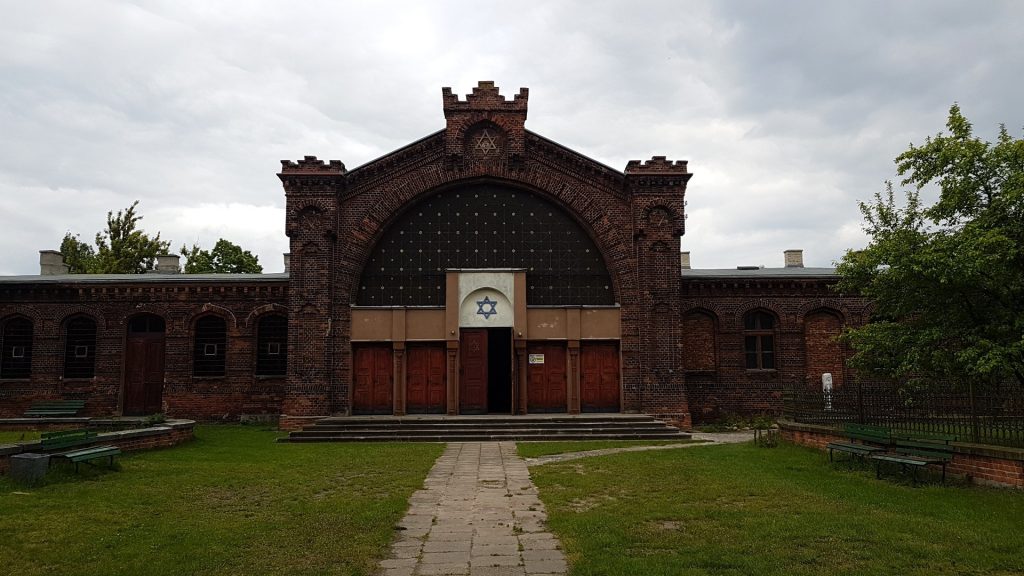
Since 1939 with the German occupation Łódź was a part of the “German Reich” and the Jewish community, the second biggest Jewish community after Warsaw, suffered under deprivation of rights and mistreatment. In 1940 Łódź was renamed to “Litzmannstadt” and the old town, Bałuty and parts of Marysin were declared as a ghetto and Jewish people were forced to live there under horrible conditions. Around one quarter of the people died in the ghetto because of hunger, illnesses and consequences of the horrendous working conditions. In the beginning 164 000 people had to live crammed together in 48 000 rooms. As time goes by more and more Jews were deported from other parts of the “German Reich” to the ghetto in Łódź/”Litzmannstadt” and the people had to live crowded together. They were forced to work in factories for the German Wehrmacht. Most of the people who were not able to work were deported and murdered in Chelmno, a death camp not far from Łódź. In 1944 the ghetto was closed down and 65 000 people were deported to the death camp Auschwitz-Birkenau and 7 200 were murdered in Chelmno. The Soviet army freed Łódź in January 1945.
From 205 000 people who were forced to live in the ghetto over the whole time only 5000 to 6000 survived.

part of the map of Łódź showing the districts where the ghetto was
4 – Jewish cemetery
Now I know more about what happened in Łódź and I want to encourage you, too, to have at least a short look in the past of this historical important city. Many people never heard about Łódź, many people don’t know the tragedy of the history of Łódź, even if it was the second biggest city in Poland at that time and had the second biggest ghetto, too. I am really thankful that I read the poem two years ago, which created curiosity, and now I want to arouse interest, too, about this paltry noticed city.

Łódź is a beautiful city with old nice-looking buildings, street art and a lot of to grab tasty food. It is a great place to visit and to stroll through the parks or along the Piotrkowska street with its lovely little shops and restaurants. But what makes this city so interesting: behind the beautiful facades of the city is more than pretty inner courtyards with cafés and bars – there is history.
Informations from: Susanne Härtel: Das Ghetto Lodz / Litzmannstadt. Deutsches Historisches Museum, Berlin 15. Mai 2015, online unter https://www.dhm.de/lemo/kapitel/der-zweite-weltkrieg/voelkermord/ghetto-lodz.html
